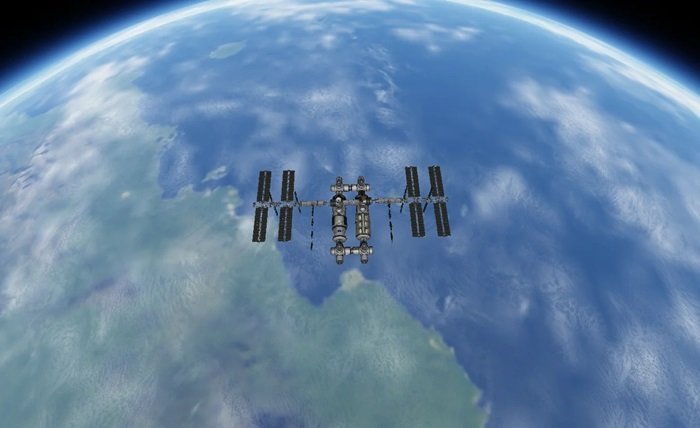Aking in Space: Exploring the Possibilities of Space Exploration and Human Endeavors

Space has always been a realm of wonder and discovery, and in recent years, the idea of “Aking in Space” has gained prominence. Whether through technological advancements, human exploration, or scientific breakthroughs, “Aking in Space” represents our continuous efforts to push the boundaries of knowledge beyond Earth. This blog post explores the various aspects of “Aking in Space,” its implications, challenges, and the future it holds for humanity.
What is Aking in Space?
“aking in Space” refers to the exploration, innovation, and survival of humans beyond Earth’s atmosphere. From the early days of space missions to the present era of interplanetary exploration, “Aking in Space” encapsulates the journey of astronauts, scientists, and researchers working to uncover the mysteries of the universe.
The essence of “Aking in Space” lies in the relentless pursuit of knowledge and technological advancements that enable humans to live, work, and thrive in space. With the development of space stations, lunar bases, and even planned Mars colonization, “Aking in Space” is no longer a distant dream but an evolving reality.
The History of Aking in Space: Milestones and Breakthroughs
The history of “Aking in Space” is filled with remarkable milestones that have shaped our understanding of the cosmos. From the launch of Sputnik 1 in 1957 to the Apollo moon landings, every achievement has brought humanity one step closer to mastering the art of space travel.
One of the most significant aspects of “Aking in Space” is the establishment of the International Space Station (ISS), where astronauts conduct experiments that benefit both space exploration and life on Earth. The advent of private space companies like SpaceX and Blue Origin has further accelerated the pace of “Aking in Space,” making space more accessible than ever before.
The Role of Technology in Aking in Space
Technology plays a crucial role in “Aking in Space,” enabling humans to explore distant planets, conduct scientific research, and ensure survival beyond Earth. Innovations in robotics, artificial intelligence, and propulsion systems have transformed “Aking in Space” from an experimental endeavor into a viable long-term mission.
One of the most exciting advancements in “Aking in Space” is the development of reusable rockets, which significantly reduce the cost of space travel. Additionally, advancements in AI-assisted navigation, life support systems, and space farming are paving the way for sustainable human presence beyond our planet.
Challenges of Aking in Space: Overcoming the Unknown
Despite the progress in “Aking in Space,” numerous challenges remain. Space is an extremely hostile environment, and ensuring human safety is one of the biggest hurdles. The lack of gravity, exposure to radiation, and psychological effects of isolation are some of the primary obstacles that astronauts face during long-duration missions.
Another significant challenge in “Aking in Space” is the development of sustainable habitats. Scientists and engineers are exploring ways to create self-sufficient ecosystems that can support human life for extended periods. From 3D-printed space habitats to closed-loop water recycling systems, “Aking in Space” requires innovative solutions to overcome these obstacles.
Aking in Space and the Future of Interplanetary Travel
The future of “Aking in Space” extends beyond Earth’s orbit, with ambitious plans to colonize the Moon, Mars, and beyond. Space agencies like NASA, ESA, and private companies are working on missions that will make human settlement on other planets a reality.
One of the key goals of “Aking in Space” is establishing a sustainable presence on the Moon, which could serve as a launchpad for deeper space exploration. The Artemis program aims to land humans on the Moon again, paving the way for Mars missions and beyond. With new propulsion technologies and advancements in space travel, “Aking in Space” will soon reach unprecedented heights.
The Impact of Aking in Space on Science and Society
“Aking in Space” is not just about exploration; it also has profound implications for science and society. Space research has led to numerous technological advancements, including satellite communication, GPS, and medical innovations. The experiments conducted on the ISS have contributed to advancements in medicine, agriculture, and material sciences.
Furthermore, “Aking in Space” inspires the next generation of scientists, engineers, and explorers. Space education programs and STEM initiatives are growing, encouraging young minds to pursue careers in space science and technology. The ripple effect of space exploration extends far beyond the cosmos, influencing industries and economies on Earth.
Aking in Space: What Lies Ahead?
The future of “Aking in Space” is incredibly promising, with ongoing advancements in technology and an increasing global interest in space exploration. As humanity continues to push the boundaries of what is possible, we can expect to see space tourism, asteroid mining, and even the first human settlement on another planet.
With collaborations between space agencies, private enterprises, and scientific communities, “Aking in Space” will continue to evolve. The dream of living and working in space is becoming more tangible, and in the coming decades, we may witness groundbreaking achievements that redefine our place in the universe.
Conclusion
“Aking in Space” represents the ultimate pursuit of knowledge, innovation, and survival beyond Earth. As we continue to explore the final frontier, our discoveries will shape the future of humanity, unlocking new possibilities for space travel, colonization, and scientific advancements.
While challenges remain, the progress in “Aking in Space” is undeniable. From the first human stepping on the Moon to the ambitious plans for Mars, every step we take in space brings us closer to a future where living beyond Earth is a reality. The journey of “Aking in Space” is only beginning, and the best is yet to come.
FAQs
1. What does Aking in Space mean?
“Aking in Space” refers to the exploration, innovation, and scientific advancements that enable humans to travel, live, and work beyond Earth.
2. What are the biggest challenges of Aking in Space?
Some of the biggest challenges of “Aking in Space” include the lack of gravity, radiation exposure, psychological effects of isolation, and the need for sustainable habitats.
3. How does Aking in Space benefit life on Earth?
“Aking in Space” has led to numerous advancements, including satellite communication, medical research, GPS technology, and improvements in materials science.
4. What is the future of Aking in Space?
The future of “Aking in Space” includes space tourism, Moon and Mars colonization, asteroid mining, and advancements in propulsion technology for interstellar travel.
5. Will humans ever permanently live in space?
With advancements in habitat technology, life support systems, and space travel, permanent human settlements on the Moon or Mars could become a reality in the near future.




